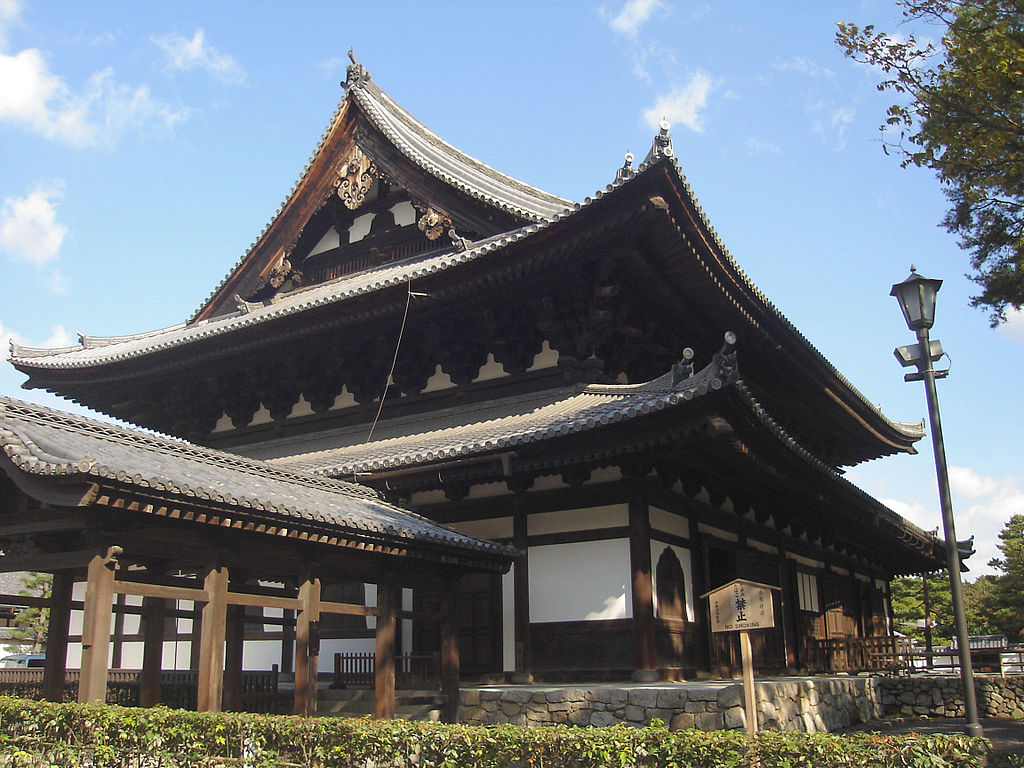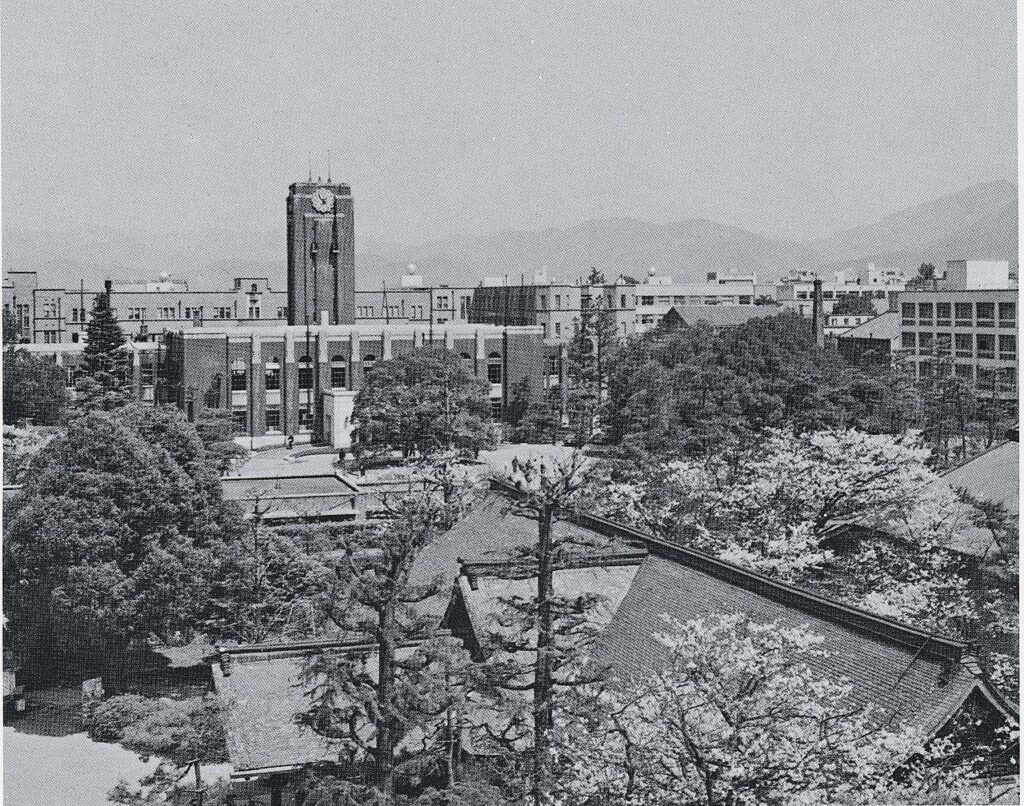
“Precisely in the midst of despair in the modern world, [an] unadulterated radical origin of philosophy as a practice of thinking while living and living while thinking can be revived … Nishida spoke of ‘digging down in between East and West’. Today it is necessary to dig down beneath the bottom of the homogenized world. With a shared sense of dismay, and by means of mutual questioning, we are called upon to dig down deeper” (Ueda Shizuteru).
The radical self-questioning of Western philosophy and the emergence of a world philosophy
Although Nishida, the founder of the Kyoto School, died in 1945, Ueda tells us that it is only in the 1980s or 1990s that Japan became aware that it now had its own school of philosophy. It is also during these two decades, which saw the publication of translations of Nishida’s and Nishitani’s main works in European languages, that the West discovered the Japanese school. This page is based on the main points of Ueda’s essay in “Contributions to Dialogue with the Kyoto School,” in Japanese and Continental Philosophy: Conversations with the Kyoto School.
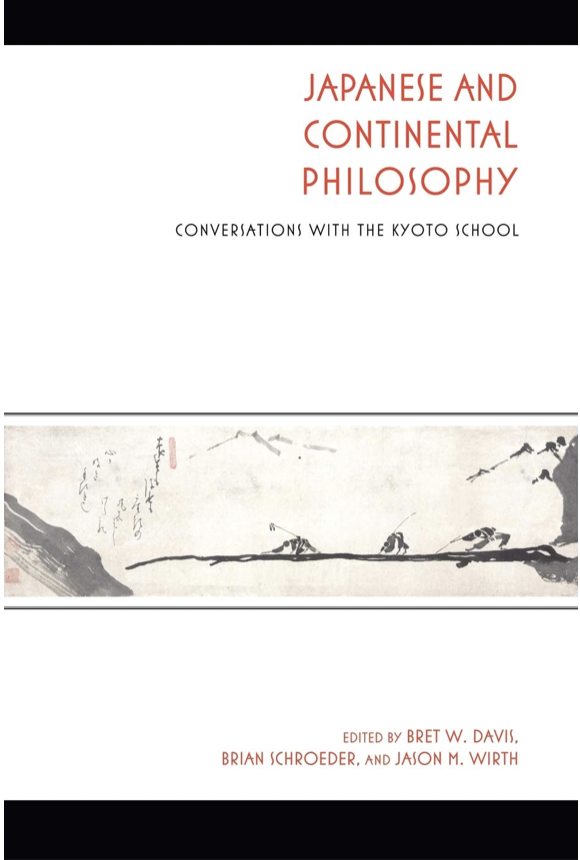
According to Ueda, the emergence of the Kyoto School must be seen against the background of the westernisation of Japan, which included the teaching of Western philosophy in Japanese universities, and in the context of a “radical self-questioning” within Western philosophy itself. This self-questioning had started with the empiricists, Bergson, Hüsserl and phenomenology, and shattered traditional philosophy with Nietzsche, Heidegger and the existentialists. “The ontological notion of substance, the logical principle of identity, subject/object dualism in epistemology, the strict division between reason and sensibility, and underlying everything the idea of ‘God’ or the distinctively modern idea of the absolute ‘subject’– all of these at once dominant and fundamental ways of thinking” (Ueda) were now being questioned. This crisis opened the way for Nishida and his successors in the Kyoto School to use the insights of their Eastern culture to shed light on the questions which exercised the thinkers of what was purported to be the philosophical foundation of science and technology, the very pillars of the West’s victorious expansion over the globe. “Early on in his life, Nishida became convinced that the problem lay with the limited scope of Western thought, confined as it was on the field of ordinary consciousness, and its understanding of reality as being” (Ueda). He then took it as his life task to show that, if one dug deeper, one would find the deeper field of nothingness, which enveloped the field of being: only on that field could the questions tormenting the West could find answers.
“The insights harbored in Eastern traditions need to be transformed into “philosophical principles”
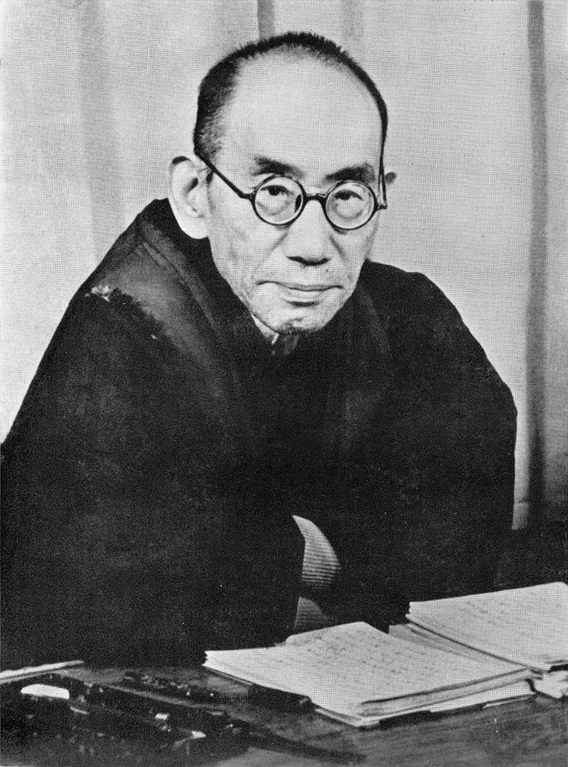
Nishida, however, recognised that, even while arising from a deeper field, those answers had to be formulated in the language of philosophy, which as the language of practical reason on the field of ordinary consciousness, was a universal language readily accessible to all people (including those without any spiritual practice). So he emphasised that “the insights harbored in Eastern traditions need[ed] to be transformed into ‘philosophical principles’ before they [could] contribute to world philosophy” (Ueda). Nishida even criticised the Japanese for their lack of logic and critical spirit … “Nishida’s key ideas, such as ‘pure experience’, ‘place’, and “contradictory self-identity’, can be viewed as traditional insights transformed into philosophical principles. Nishitani took Mahayana Buddhism’s key term ’emptiness’ and refashioned it into a fundamental philosophical category” (Ueda.)
Nothingness as the negation of being in the West and “ground” of being in the East
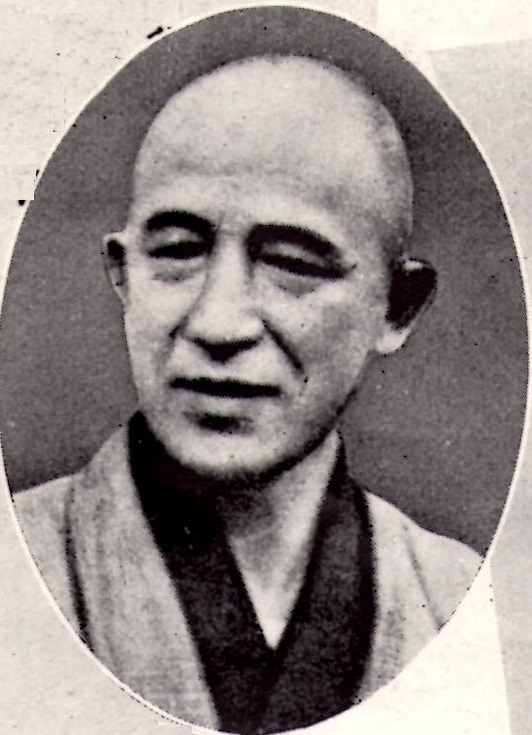
The Kyoto School philosophy has widely been described as philosophy from the standpoint of nothingness. Echoing Nishida, Ueda states that this is an oversimplication, as it is not difficult to find thinkers in the West who have been “deeply moved by an idea of nothingness” (Ueda). Among these, Meister Eckhart, Nietzsche and Heidegger, have been closely scrutinised, especially by Nishitani and Ueda himself. Both came to the conclusion that, though these thinkers were sincere in their interest, their grasp of nothingness remained framed within an understanding of reality as being.
In the case of Eckhart, Bret Davis says that Ueda originally told him the following: “Eckhart’s ‘nothingness’ remains a negative theological sign pointing towards an inexpressibly higher Being … When all is said and done, Eckhart’s nothingness of the absolute (zettai no mu) is an adjective modifying a substance. In contrast, Zen’s nothingness (zettai mu) is a verb referring to “the activity of emptying out.” At the end of his life, however, James Heisig says that “the initial struggle to defend the distinction between the “mysticism” of Eckhart and the “non-mysticism” of Zen ended with Ueda recognizing a “non-mysticism” that Eckhart himself achieved by breaking through “mysticism.” Heisig and Ueda had a twenty-year-long professional as well as friendly relationship, as they collaborated in the creation of the Ueda Shizuteru Shu (The Ueda Shizuteru Collection). The above statement is in volume 8 of the Collection.
With regards to Nietzsche, it is clear that he gave a forceful diagnostic of the predicament in which the West had been thrown, as science had undermined the belief in a solid metaphysical order of the universe, and he proclaimed “the death of God.” But, though Nietzsche was acquainted with Buddhism, he had failed to get a proper grasp of its teachings, and his thought remained firmly set in the theoretical mode. He had a keen awareness of the fact that, along with the sense of meaninglessness, a new-found freedom had just been recovered. But, with this new freedom came the need to create new values. Nietzsche’s innovative philosophical style and works like Thus Spoke Zarathustra, are evidence of his undertanding that a new mode of thinking was required. But, he seems to have lacked access to a mode of thinking that would go deeper than an apprehension of reality as being, as this had rested on the now collapsed belief in a metaphysical order. Reality as being is the product of the ego-centred mode of the cogito. To go deeper, one must think from the standpoint of no-self, or rather, live as well as think from the standpoint of no-self, which allows a grasp of “actual” reality as it unfolds moment to moment.
As for Heidegger, especially the later Heidegger, Ueda regards him as the Western “thinker who has most thoroughly inquired into the mutual interpenetration of being and nothingness.” Yet,” he continues, “it remains the case that Heidegger’s ultimate concern is still with being. Being (das Sein) is spoken of in terms of nothingness to clearly distinguish it from beings (das Seiende), but nothingness is not the origin. Even when be-ing – verbally understood as the event of appropriation/expropriation (Ereignis/Enteignis) – approximately expresses the dynamic of “from nothingness/towards nothingness,” it is an event of being, not of nothingness” (Ueda).
Ueda does not mention Sartre, the one philosopher who titled his magnum opus L’Etre et le Néant (Being and Nothingness) as Nishitani had firmly dismissed his understanding of nothingness as a “wall at the bottom of the ego.” In his view, Sartre is guilty of the pervasive error of seing “emptiness as a thing called emptiness,” also known in Zen as “the emptiness perversely clung to” (Religion and Nothingness, 33).
Ueda writes: “In the West nothingness is understood as non-being, that is, as the negation of being, and in this sense is based on being. Even when negativity is actively or even ardently grasped, in the end it is grasped as a self-negation of being that serves to elevate being itself. By contrast, in the intellectual transition behind Nishida and Nishitani, nothingness (mu) is not only non-being (hi-u) as the negation of being (u), but also contains a sense that goes beyond this, and this ‘additional sense’ is brought to life when the originariness of nothingness is existentially realized and thoughtfully cultivated.”
Nishida and his successors elaborated philosophies based on the notion of nothingness as the “ground” of being, as held in the “East Asian notion of a primordial origin of “nothingness” (Ch wu; Jp mu) as well as Mahayana’s notion of “emptiness” (Sk sunyata; Jp ku).” Nishida called it “absolute nothingness’ (zettai-mu) to avoid confusion with the relative nothingness where nothingness is seen as the negation of being.
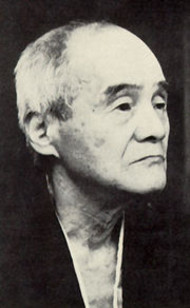
In the final analysis, then, it is not incorrect to see the standpoint of absolute nothingness or emptiness as the core insight of Kyoto School philosophy. One may add that whereas Nishida conceived of nothingness in logical terms as a “place” (basho), Tanabe, who was influenced by Pure Land thought, rather than Zen, saw it in terms of “praxis,” that is, as “love.” As for Nishitani, though he followed more closely Nishida’s notion of absolute nothingness as a “place” – which he called a “field,” he eventually came to use the Mahayana word sunyata – emptiness – and so the field he contrasted with the field of (ordinary) consciousness came to be called “the field of emptiness.”
The collapse of the belief in an absolute demanded a new broader concept: sunyata, emptiness
Ueda, who studied directly with Nishitani, links Nishitani’s use of the term emptiness to “the arrival of nihilism in Nishitani’s thought, a problem which had not been an issue for Nishida” (Ueda). While Nishida had been concerned with an integration of Eastern and Western cultures, that is, that of modern science and Mahayana, Nishitani was faced with the problem of overcoming nihilism. “The fundamental problem of my life … has always been, to put it simply, the overcoming of nihilism through nihilism.” (Nishitani, quoted by James W. Heisig, Philosophers of Nothingness, 215)
Nishida had to act, to some extent, as a comparatist, since his task was to contrast the Eastern and Western understanding of reality, and show how the Eastern standpoint of nothingness enveloped the Western standpoint of being. Once that was established, Nishitani was in a position to launch an inquiry on a current world issue – the overcoming of nihilism. He was able to show how the nihility arising out of a sense of meaninglessness, could be understood as an experience of relative nothingness, which could be overcome by an acceptance of this nothingness as the “ground” of being. Nihility was thereby turned into absolute nothingness, nihilism was overcome by going through it, and absolute nothingness could be seen as more than a concept of logic: it was what Mahayana had called sunyata, emptiness. Nishitani made clear, however, that “he ‘borrowed’ the word emptiness, and used it “rather freely” from a “standpoint that attempts to stand at once within and outside of tradition” (27).
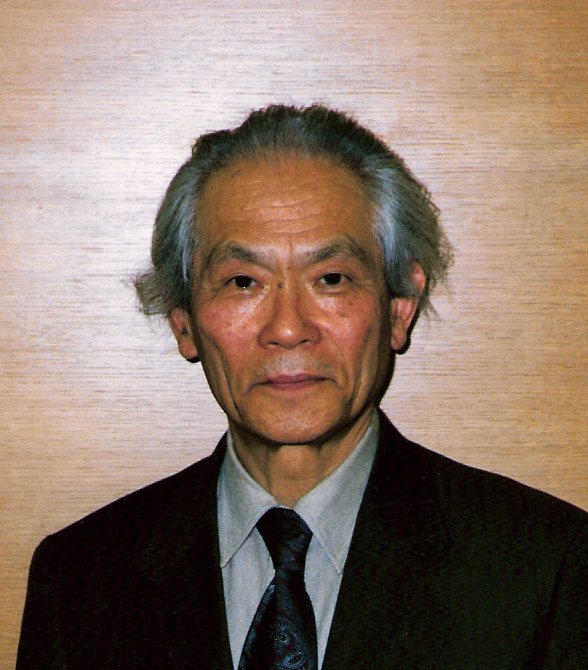
Ueda argues that “Because of the collapse of the absolute, the loss of the horizon of ontology, and the endless nihilization of nihility … what was direly needed was a simple basic category that could accommodate as an ambiguous possibility absolute nothingness on the one hand and nihility on the other, and, moreover, which could convey the dynamic of … a recovery from the reality of nihility (and the nihility of reality) to absolute nothingness. Nishitani found this basic category in “emptiness” (sunyata, ku), an idea that was, as he said, “demanded by the problem of nihilism.”
Emptiness, as a concrete word, lent itself to metaphorical associations which could convey meaning through feeling. For instance, Nishitani writes: “As a valley unfathomably deep may be imagined set within an endless expanse of sky, so it is with nihility and emptiness … Emptiness is an abyss for the abyss of nihility.” He also says that “we fail to realize that we stand more to the near side of ourselves in emptiness than we do in self-consciousness” (28). Valley, sky, abyss, near side … Metaphors speak the language of an emptiness that is lived rather than just thought. Their concreteness is apt at conveying the “affirmative aspect of the standpoint of emptiness,” what Mahayana calls “true emptiness, marvellous (or wondrous) being” which Ueda tells us became a central concern of Nishitani after the first publication of Religion and Nothingness.
Ueda ends the essay with a reflection on the state of the modern world, where the contrast between East and West is no longer an important issue, as the world has become “homogenized,” and concludes that “today it is necessary to dig down beneath the bottom of the homogenized world. With a shared sense of dismay, and by means of mutual questioning, we are called upon to dig down deeper.”
Sources:
Ueda Shizuteru – “Contributions to Dialogue with the Kyoto School,” in Japanese and Continental Philosophy: Conversations with the Kyoto School Ed: Bret W. Davis, Brian Schroeder and Jason M. Wirth (2011)
Bret W. Davis “Letting Go of God for Nothing – Ueda Shizuteru’s Non-Mysticism and the Question of Ethics in Zen Buddhism,” Frontiers of Japanese Philosophy Vol 2.
James W. Heisig – “Introduction to Ueda’s Works,” in Tetsugaku Companion to Ueda Shizuteru, Ed. Ralf Müller, Raquel Bouso and Adam Loughnane (2022)
